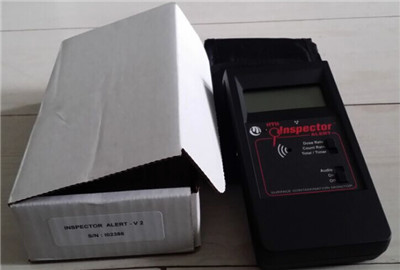Nuclear radiation detectors, also known as radiation sensors, are essential tools for monitoring and measuring radiation levels. These devices come in various forms, including radiation alarm systems that alert users when radiation levels exceed safe thresholds. However, not all detectors provide detailed readings. Some instruments, like radiometers, only indicate whether the current radiation level is above or below a standard, without displaying the exact dose. In contrast, radiation dose detectors offer more precise information by showing the actual radiation dose at a given location.
The core component of a nuclear radiation detector is the Geiger-Müller tube, which enables the device to detect not only nuclear radiation but also X-rays, gamma rays, and beta particles. Because of this versatility, some manufacturers refer to these devices as X-ray dose alarms or X/Y-ray dose alarms. This makes them widely applicable in environments where multiple types of radiation may be present.

Key features of the detector include:
- Detector Type: Halogen-filled Geiger counter tube with energy compensation
- Effective Diameter: 1.75†(45mm)
- Mica Flakes Density: 1.5–2.0 mg/cm²
Detection Range:
- Alpha Rays: ≥ 2.0 MeV
- Beta Rays: ≥ 40 keV
- Gamma Rays: ≥ 10 keV
Display: High-definition 4-digit LCD display
Average Period: The display updates every 3 seconds, with an average over 30 seconds. As radiation intensity increases, the averaging period shortens.
Measuring Range:
- mR/hr: 0.001 ~ 110.0
- μSv/hr: 0.001 ~ 1,100
- CPM: 0 ~ 350,000
- CPS: 0 ~ 5,000
- Total/Timer: 1 ~ 9,999,000 counts
Sensitivity: 3500 CPM/mR/hr referenced to Cs-137
Accuracy: ±10% ~ ±15%
Alarm Settings:
- Sv/hr: 0 to 500
- mR/hr: 0 to 50
- CPM: 0 to 160,000
- Sound Alarm: 70dB @ 1m (can be turned off for silent mode)
Indicator Light: A red light flashes once per detected count (one ionization event).
Timer Function: Customizable from 1 minute to 40 hours (in 1-minute increments)
Output: CMOS / TTL mini jack for connection to computers or data loggers. A submini jack allows for electronic calibration.
Power Supply: 9V alkaline battery. Under normal conditions, battery life is approximately 2000 hours at 1 mR/hr, and about 700 hours at higher radiation levels.
Operating Temperature: -20°C ~ 50°C
Dimensions: 150 x 80 x 30 mm
Weight: 272g (without battery)

This technical description is provided by Shanghai Danding International Trading Co., Ltd., a trusted supplier of radiation detection equipment and related services.
Cixi Xinke Electronic Technology Co., Ltd. , https://www.cxxinke.com